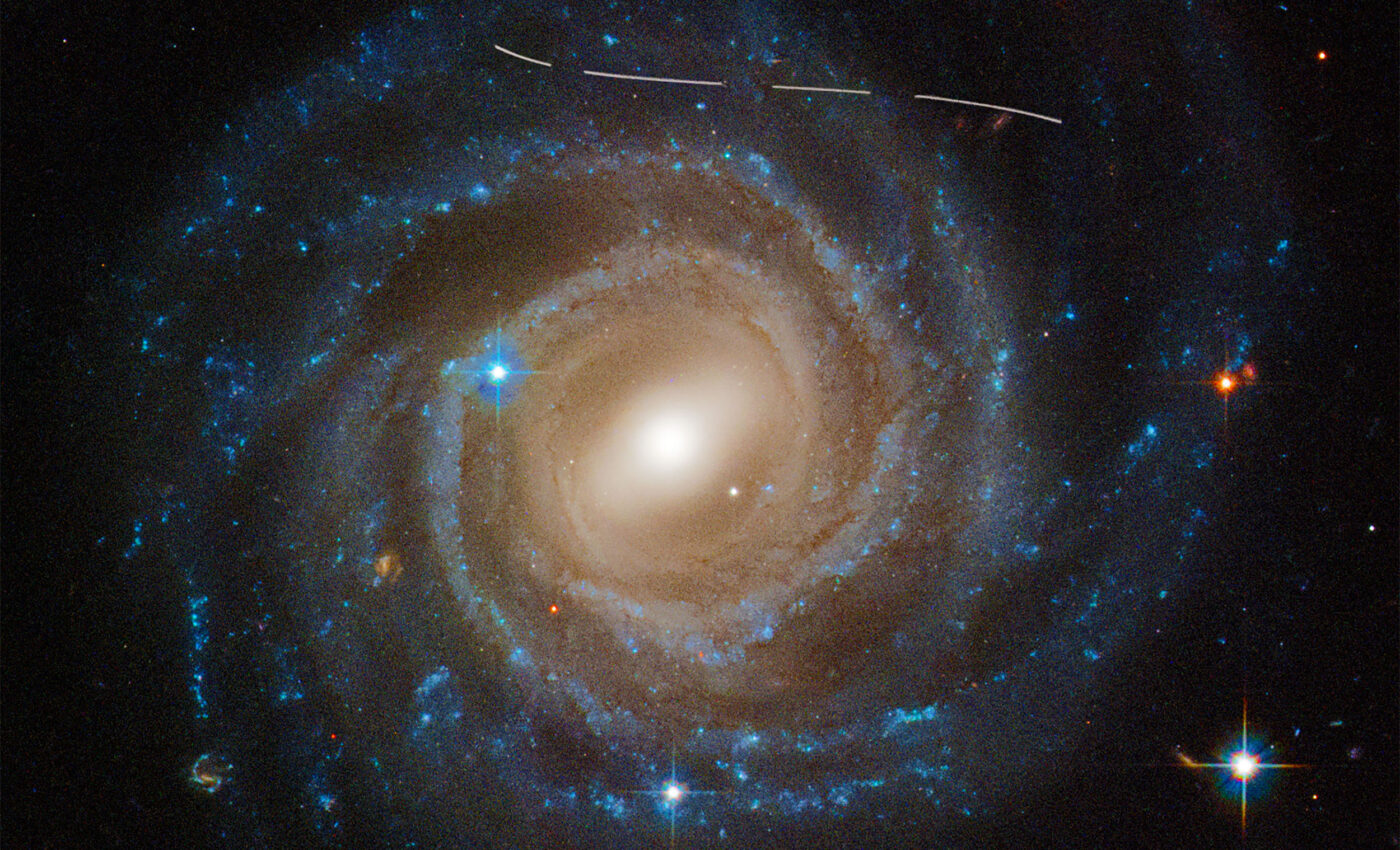
Beautiful photo of galaxy UGC 12158 gets photobombed by an asteroid
Astronomers have employed a novel approach with NASA’s Hubble Space Telescope to uncover a largely unseen population of smaller asteroids in our solar system.
By sifting through a vast archive of images captured by Hubble over a span of 19 years, the researchers have identified an impressive 1,701 asteroid trails, with 1,031 of these asteroids being previously uncatalogued.
The study was led by Pablo García Martín of the Autonomous University of Madrid, Spain, and co-authored by Bruno Merín of the European Space Astronomy Centre, also in Madrid, Spain. Together, they have uncovered new data on the formation and evolution of the asteroid belt.
Citizen scientists hunting asteroids with AI
This cosmic treasure hunt was made possible by the collaborative efforts of professional scientists and a dedicated group of volunteers from around the world, known as “citizen scientists.”
The researchers combined the volunteers’ identifications with a machine learning algorithm to efficiently detect the asteroids in the Hubble images.
“We are getting deeper into seeing the smaller population of main belt asteroids. We were surprised with seeing such a large number of candidate objects,” said lead author Pablo García Martín.
“There was some hint of this population existing, but now we are confirming it with a random asteroid population sample obtained using the whole Hubble archive. This is important for providing insights into the evolutionary models of our solar system,” he concluded.
Insights into asteroid formation and evolution
The large, random sample of asteroids discovered in this study offers new insights into the formation and evolution of the asteroid belt.
The abundance of small asteroids supports the idea that they are fragments of larger asteroids that have collided and broken apart over billions of years, like smashed pottery.
This finding challenges an alternative theory suggesting that these smaller fragments formed as such billions of years ago.
“Collisions would have a certain signature that we can use to test the current main belt population,” said co-author Bruno Merín.
Hubble’s unique vantage point for asteroid hunting
Hubble’s fast orbit around the Earth allows it to capture wandering asteroids through their telltale trails in the telescope’s exposures.
As viewed from an Earth-based telescope, an asteroid leaves a streak across the picture. Asteroids essentially “photobomb” Hubble exposures by appearing as unmistakable, curved trails in the photographs.
By knowing the position of Hubble during the observation and measuring the curvature of the streaks, scientists can determine the distances to the asteroids and estimate the shapes of their orbits.
The faintest asteroids in the survey are roughly one forty-millionth the brightness of the faintest star that can be seen by the human eye.
Collaborative cosmic exploration
The Hubble Asteroid Hunter, a citizen-science project launched in 2019, was a collaborative effort between researchers, engineers, and the Zooniverse platform.
A total of 11,482 citizen-science volunteers provided nearly 2 million identifications, which were then used to train an automated algorithm based on artificial intelligence to identify asteroids. This pioneering approach may be effectively applied to other datasets in the future.
“Asteroid positions change with time, and therefore you cannot find them just by entering coordinates, because at different times, they might not be there,” said Merín. “As astronomers we don’t have time to go looking through all the asteroid images. So we got the idea to collaborate with over 10,000 citizen-science volunteers to peruse the huge Hubble archives.”
Hubble and the future of asteroid discovery
The project will next explore the streaks of previously unknown asteroids to characterize their orbits and study their properties, such as rotation periods.
However, because most of these asteroid streaks were captured by Hubble many years ago, it is not possible to follow them up now to determine their orbits.
In summary, the fascinating study led by Pablo García Martín and Bruno Merín demonstrates the immense potential of collaborative efforts between professional scientists, citizen scientists, and advanced technologies in uncovering new insights into our solar system.
By harnessing the power of the Hubble Space Telescope‘s vast archive, the dedication of thousands of volunteers, and the efficiency of machine learning algorithms, the researchers have unveiled a hidden population of asteroids, providing new data on the formation and evolution of the asteroid belt.
This innovative approach paves the way for future discoveries and highlights the importance of continued exploration and collaboration in our quest to understand the cosmic landscape that surrounds us.
The full study was published in the journal Astronomy and Astrophysics.
—–
Like what you read? Subscribe to our newsletter for engaging articles, exclusive content, and the latest updates.
Check us out on EarthSnap, a free app brought to you by Eric Ralls and Earth.com.
—–













